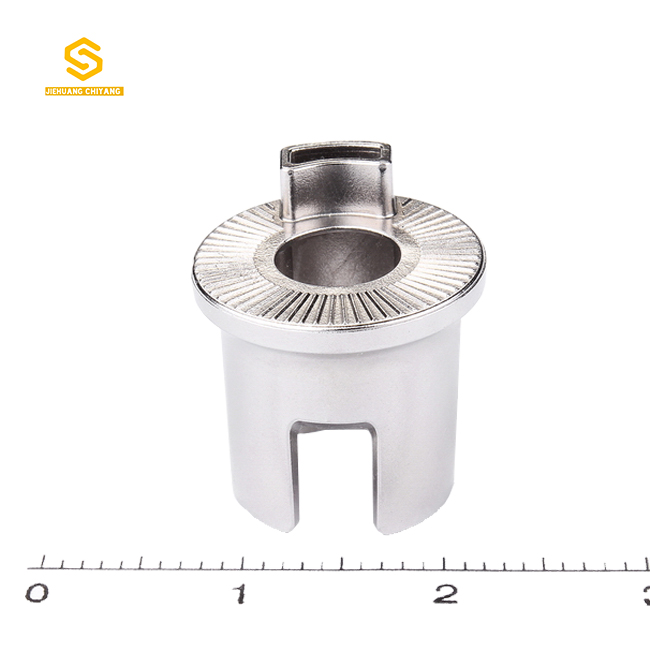AddUp Solutions, a global metal additive manufacturing OEM, and Dassault Aviation, a French manufacturer of military aircraft and business jets, are working together to transition metal AM technology for aeronautics from “prototyping” to “mass production.” To accomplish this, additive technology must be optimised in terms of quality, reproducibility, and productivity in order to consider mass production of metal parts that will then be integrated into aircraft.
Growing global air traffic, increasing scarcity of materials, lightening and optimization of parts, the search for reliability for better quality, and compliance with increasingly demanding regulations are all issues that must be resolved today in order for the aeronautics industry to maintain and increase its competitiveness. Metal 3D printing under industrial-scale production conditions is one solution to these challenges. Powder Metallurgy Metal Injection Molding

In this context, Dassault Aviation established the collaborative R&D project “AEROPRINT,” which AddUp is a part of, with the help of numerous partners, research centres, universities, and industries. This 5-year project aims to develop, qualify, and implement a competitive pre-industrial demonstrator of multi-material metal additive manufacturing (Titanium and Aluminum) for the production of complex aeronautical parts certified in classes 2 and 3. The Dassault Aviation facility in Argonay, Auvergne-Rhône-Alpes (France), has been designated as a pilot site for the implementation of this process.
AddUp, a machine and additive parts manufacturer, is in charge of developing a new production system based on interoperability and process robotization. A true automated workshop that will enable the production of aviation parts in series and from two different materials using additive technology.
The goal is to pool the equipment while ensuring proper separation and circulation of the two materials selected. Experts at AddUp are developing a new type of closed enclosure that allows powder to enter on one side while a tray of metal parts exits on the other. This future workshop will consist of two production units of four FormUp® 350 machines based on powder bed fusion technology (L-PBF: Laser Powder Bed Fusion) as well as the finishing means required. Two PBF machines from AddUp have been chosen.
Following a phase of joint research and development to explore all of the project’s requirements, AddUp is now working on the full-size model to verify and validate the principles retained, from mechanical design to autonomy, without forgetting the computer, which manages everything. AddUp Manager, with its ergonomic and intuitive interface and ultra-fast trajectory generation engine, allows you to prepare production files by accessing over 250 modifiable variables and customizable fusion strategies. Monitoring, an important aspect of such a project, will be carried out using the already available AddUp Dashboards software, which will be supplemented by bricks developed for this purpose.
AddUp Dashboards allows you to view real-time production data, monitor the shop floor, and quickly analyse any machine event. A customizable map that shows real-time progress, remaining production time, and current status is one of the many pre-configured views available in the software. Users can thus access data from a previous production run and track production in progress using the same tool.
An operator loads the two metal powders, which are packaged in industrial containers, at a delivery station located outside the workshop. Inside, an automated conditioning station takes over the production tray and inserts it into a mobile chamber known as a “jacket.” Depending on the desired material, it is transported in an inerted shuttle by an Automated Guided Vehicle (AGV) and then placed in each PBF machine. When the printing is completed, the shuttle returns the mobile chamber to a depowdering station.
This same station is capable of removing the majority of the powder that was not fused during the printing process and reusing it for the next printing after a recycling phase. Once the powder has been completely removed, the shuttle proceeds to the conditioning station, where the tray containing the parts is extracted from the chamber and transported to the parts washing and drying station. The latter receives a new tray and resumes printing. The tray containing the parts is cleaned more thoroughly before being allowed to leave the workshop and be taken over by the operator.
An automated workshop has numerous advantages. The operators have no contact with the powder from the standpoint of HSE (Health, Safety, and Environment). They only enter the robotized enclosure for maintenance purposes, and the rest of their work is done outside of it. From an industrial standpoint, once the process has been validated and qualified, production repeatability is ensured.
This prototype automated workshop will serve as the foundation for a ready-to-use industrial solution for deploying additive manufacturing machines in existing workshops, ensuring the highest level of productivity and safety.
About Manufactur3D Magazine: Manufactur3D is an online magazine on 3D Printing. Visit our Global News page for more updates on Global 3D Printing News. To stay up-to-date about the latest happenings in the 3D printing world, like us on Facebook or follow us on LinkedIn and Twitter.
Manufactur3D™ is India’s Leading and Premier Online Magazine carved out for the 3D Printing Business community in India and globe.

Mim Manufacturing Process ©2022 – Manufactur3D Magazine | All Right Reserved | Developed by SquashCode.